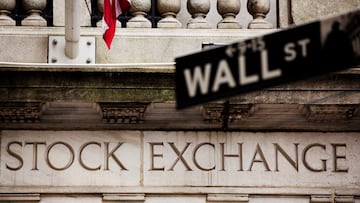FINANCE
Economists warn that more bank failures could be on the horizon
Economic uncertainty poses risks for banks as the US experiences its first major bank failure of 2024. Could more bank failures be coming?

Republic First Bank, a Pennsylvania-based financial institution, has collapsed, with the FDIC covering customers’ deposits by transferring them to Fulton Bank after an agreement was reached with the federal agency.
This is the first major bank collapse this year, following five that occurred in 2023, as the high-interest rate environment destabilized the balance sheets of major financial players. When Silicon Valley Bank (SVB)collapsed in spring 2023, many economists warned that more could follow—and they did. Signature Bank, First Republic Bank, Heartland Tri-State Bank, and Citizens Bank collapsed in the succeeding months, a sign of instability as the Federal Reserve’s monetary policy stressed these institutions.
FDIC-insured banks protect customers’ deposits up to $250,000. In some instances, funds beyond that level can be returned to depositors so long as “their funds are deposited in different ownership categories, and all FDIC requirements for each ownership category are met,” as SVB explained after its failure.
Notably, the collapse of Republic First came just a month after the Federal Reserve ended the Bank Term Funding Program (BTFP) set up after the SVB’s failure last year. The Fed established the BTFP to support banks experiencing stress and allowed for one-year loans to be distributed to institutions that could be vulnerable to being run by depositors. Writing for The Conversation, Ru Xie, an Associate professor of Finance at Bath University, did not believe that ending the program would bring about additional bank failures but did say ―back in February—that it could increase borrowing costs, pushing down profits, which could cause them to reduce the availability of credit and “potentially weaken the economy.”
A weaker economy is more vulnerable to shocks, which the Fed has to consider as it determines the appropriate monetary policy to abide by its congressional mandate to protect workers and maintain price stabilization. Since the Fed began imposing rate hikes in March 2022, the annualized rate of inflation, as measured by the Consumer Price Index, has fallen from 8.5 percent to 3.5 percent. Meanwhile, unemployment has increased slightly from 3.6 percent to 3.8 percent.
The Federal Reserve has warned that the economy remains vulnerable to shocks
In October 2023, the Federal Reserve released the annual Financial Stability Report and found that while “trading conditions largely recovered from the notable strains seen following Silicon Valley Bank’s failure,” liquidity challenges in Treasury markets were still present and “could again deteriorate in the face of further negative shocks.” Shocks are nearly impossible to predict, as evidenced by their name. Still, the Fed has said that it is taking steps to reduce potential vulnerabilities within financial markets to reduce the chance that a shock could destabilize the economy in fundamental and lasting ways, as was seen over a decade ago during the Great Recession. While no major ‘shocks’ have been experienced in the market since the report was released, the continued high-interest rate environment, paired with the unique challenges facing Republic First, was enough to lead to its failure.
Additionally, the report highlighted the specific risks of runs on money market funds, stablecoins, and other “cash investment vehicles.” In part, the collapse of SVB was brought on by investors who were all concerned about the bank’s liquidity and started pulling their money, effectively causing a run on the bank. The action taken by the FDIC and the Pennsylvania Department of Banking and Securities was swift and showed that with smaller banks, federal and state authorities can protect depositors.
The threats growing in the commercial real estate market
However, one of the largest sectors creating vulnerabilities for the US economy is commercial real estate (CRE), which has seen demand fall significantly as many companies move their workplaces online and are less reliant on expense rentals in the country’s largest cities. Owners of these buildings could soon be underwater on these investments as they find no possible renters willing to pay prices seen before the pandemic. This month, the Fed warned that “the delinquency rates for credit card, auto, and [commercial real estate] CRE loans—especially those backed by office properties—increased in the second half of 2023.” Additionally, banks with a “concentrated exposure” to loans where the collateral in question is commercial real estate property were reportedly “particularly vulnerable.” The largest holders of commercial real estate in the US are the largest banks: JP Morgan Chase, Wells Fargo, and Bank of America, and U.S. Bank. Price fluctuations in the commercial real estate sector are one to watch as they create vulnerabilities for the economy broadly, and could require government action to find new uses for these buildings.
During a congressional hearing, Representative Jasmine Crockett asked experts if providing a subsidy to transform these unoccupied office buildings into affordable housing units, where there is a persistent lack of supply. Jeffery DeBoer of the Real Estate Roundtable responded to the congresswoman that such a program would be beneficial and that some cities and states are taking those types of actions. During Mr. DeBoer’s opening statement, he also reaffirmed the threats highlighted by the Fed, noting that “office markets confront the greatest liquidity, operating cost, and demand challenges” and that down the line, these “negative pressures” could lead to “increases in mortgage defaults, foreclosures and large losses of equity.”






